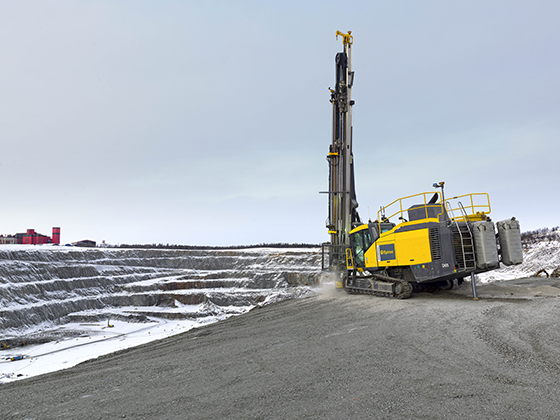Newmont’s Penasquito gold mine in Mexico already embraced drill automation a few years ago with Epiroc’s large Pit Viper drill rigs, including PV-351 and PV-271 models, taking the operation Epiroc says “to new levels of safety, productivity and efficiency.” Now, as outlined in Epiroc’s just released Annual and Sustainability Report 2020, the mine – which also produces silver, lead & zinc – has embraced sustainability further by utilising Epiroc’s smaller SmartROC D65 drill rig.
The SmartROC D65 surface drill rig was introduced to the market in 2010. “It became an instant success, especially in the demanding mining applications in Australia, but also in South America and Latin America, where it is used in both preparatory work, like pre-split drilling, and regular production drilling. The SmartROC D65 is packed with smart features, such as automated drilling and rod handling. It efficiently drills high-quality blast holes with accuracy and precision. A few years ago, the rig was updated with an intelligent fuel-saving system. For mine sites such as Penasquito – and for the planet – this translates into true industry-leading benefits, not the least on energy efficiency.”
For example, the SmartROC D65 emits 34% less CO2 emissions per drilled metre than the comparable FlexiROC D65 rig. A rig like this may drill hundreds of thousands of metres of rock through its lifetime, making a significant difference on the emissions over time. “The SmartROC D65 rig’s automated drilling and rod handling also means that drill bits and other consumables wear out at a slower pace, and the overall wear and tear on the machine is reduced. This not only saves the customer time and money, but also benefits the environment as fewer spare parts and travels by service technicians are needed. During 2019, the SmartROC D65 rig has been further improved. This continued evolution now has Epiroc’s innovative automation platform as its foundation.”
It includes features such as the Auto Feed Fold, a new interactive touch screen and 8 m pipes, which result in less rod changes and more time drilling. The new hydraulic system, with fewer and more efficient pumps, also needs approximately 300 litres less hydraulic oil and a minimal number of hoses and connections. Besides decreasing the amount of oil needed, this system also further reduces the fuel consumption of the rig. All in all, an additional reduction to the environmental footprint.











